Erector Spinae Plane Block
When to block:
Patients presenting with:
• Rib fractures (3 or more)
• May consider in burns, shingles, transverse process fractures, chest tubes
Amount of anesthetic:
• ~15-20cc 0.5% bupivacaine
• Bupivacaine max dose: 2-2.5mg/kg (175mg/dose)
• Monitor patient on cardiac monitor for at least 60min (re: Local Anesthetic Systemic Toxicity)
Where you put the probe and needle:
• Position - sitting, prone or lateral decubitus
• Linear high frequency probe
• Use sterile/semi-sterile technique
• Place in longitudinal plane
• Probe marker to patient’s head


• Start by finding the spinous process midline

Identify the transverse process:
• The transverse process is ~3cm lateral to the spinous process and is ~2-3cm deep
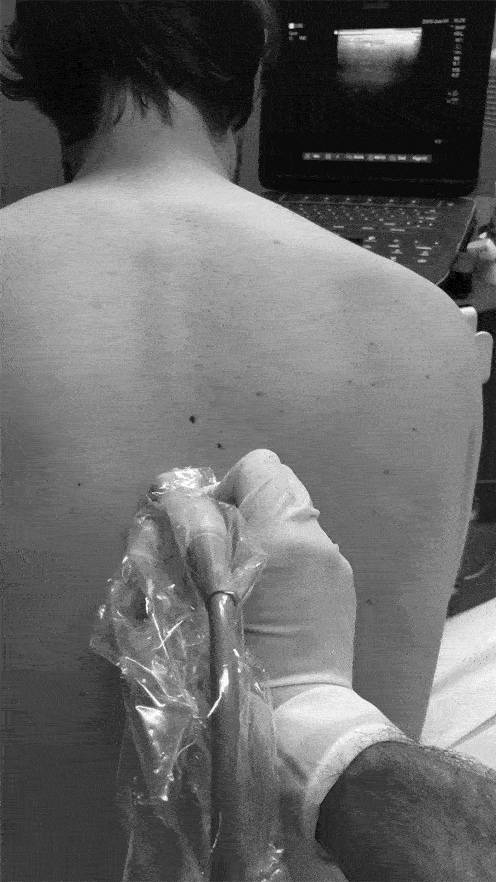
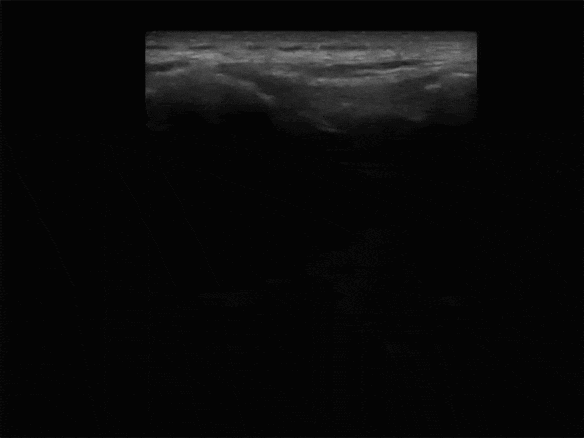
• View the spinous process midline then slide lateral to lamina, and then transverse process (transverse process will be more superficial to lamina)
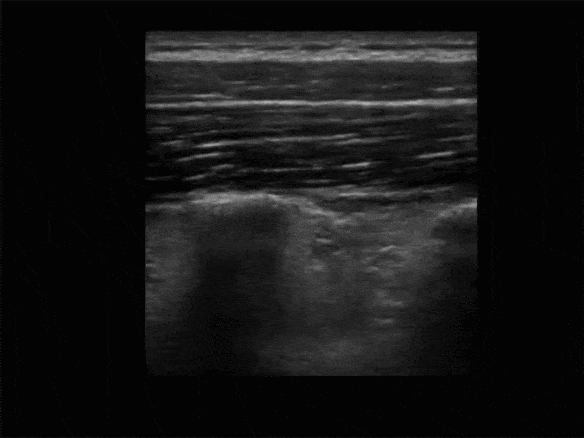
• The more rounded rib is lateral of the transverse process
• Avoid the lungs (may see lung sliding lateral and deep)
Inject the anesthetic:
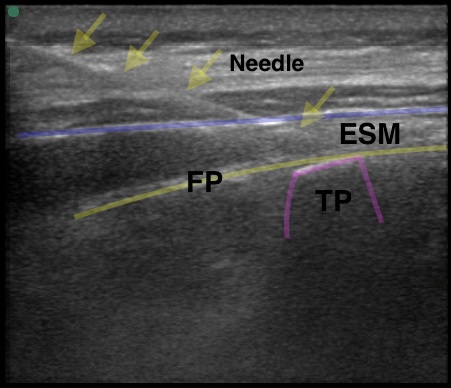
• Insert needle from above or below using in plane technique
• Always visualize the needle tip

• Injecting anesthetic deep to the erector spinae muscle/plane
• Position - sitting, prone or lateral decubitus
• Linear high frequency probe
• Use sterile/semi-sterile technique
• Place in longitudinal plane
• Probe marker to patient’s head
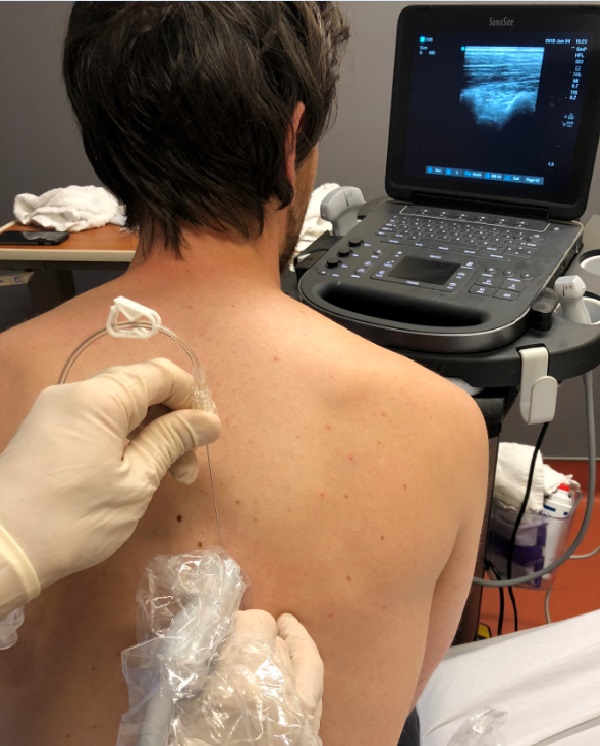
• Start by finding the spinous process midline


Identify the transverse process:
• The transverse process is ~3cm lateral to the spinous process and is ~2-3cm deep

• View the spinous process midline then slide lateral to lamina, and then transverse process (transverse process will be more superficial to lamina)

• The more rounded rib is lateral of the transverse process
• Avoid the lungs (may see lung sliding lateral and deep)

Inject the anesthetic:
• Insert needle from above or below using in plane technique
• Always visualize the needle tip

• Injecting anesthetic deep to the erector spinae muscle/plane

